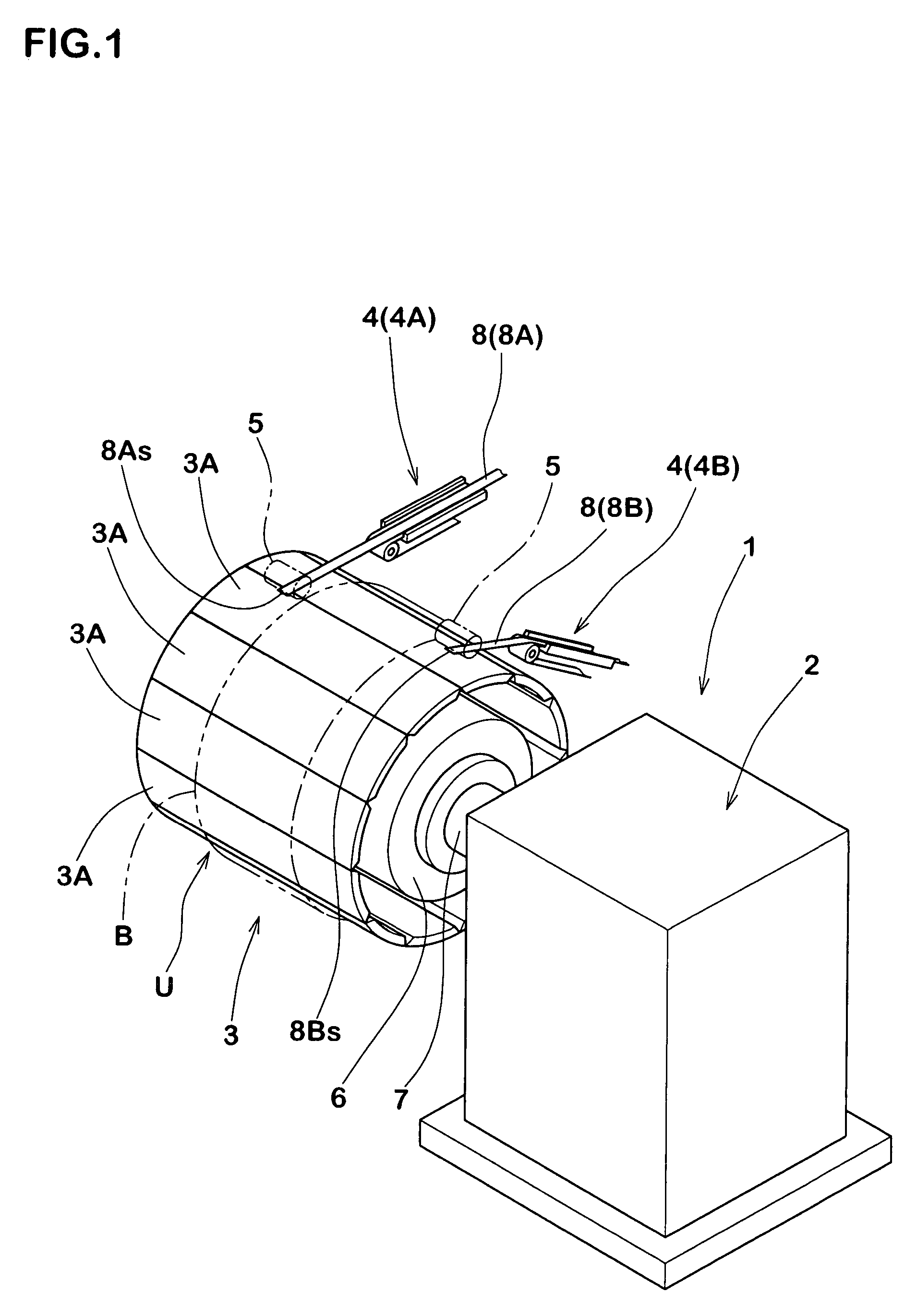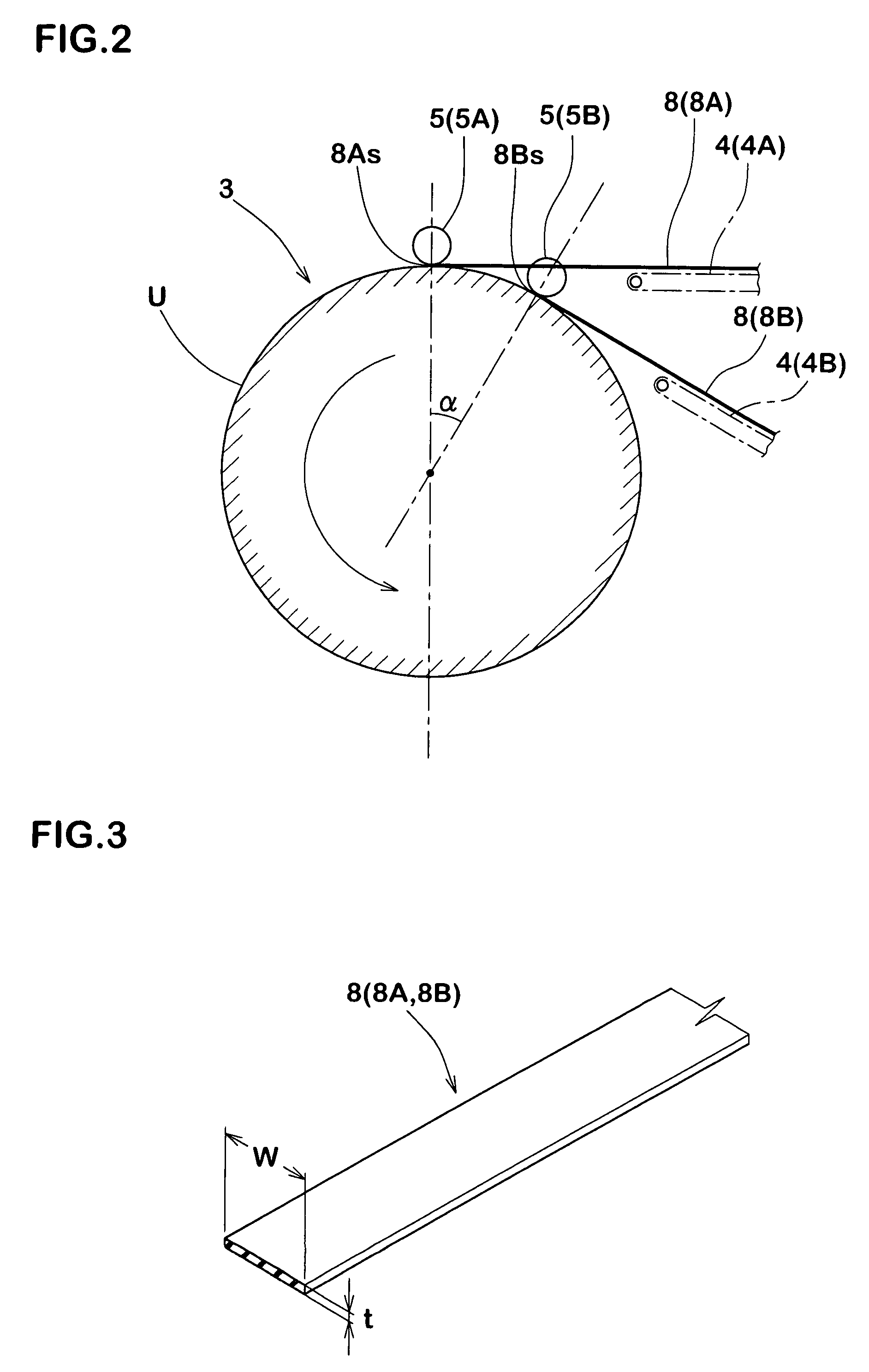Method for manufacturing a pneumatic tire and a pneumatic tire obtained thereby
a manufacturing method and technology of pneumatic tires, applied in the direction of tires, vehicle components, non-skid devices, etc., can solve the problems of unevenness of tires, cracks or rubber chippings in those portions, and it is difficult to wind the rubber strip g at specified positions in an accurate manner, so as to improve productivity, uniformity and durability.
- Summary
- Abstract
- Description
- Claims
- Application Information
AI Technical Summary
Benefits of technology
Problems solved by technology
Method used
Image
Examples
examples
[0097]Twenty pneumatic tires for heavy-duty purpose of a tire size of 11R22.5R each were manufactured by using a plurality of types of non-vulcanized tread rubbers according to the specifications as illustrated in Table 1. Except the tread rubbers, tread patterns and internal structures were common to all. Uniformity and durability of the tread rubber were evaluated for all of those.
[0098]Methods of evaluation were as follows.
[0099]Radial runouts (RRO) were measured for each sample tire (average value of n=20) and indicated as indices with the RRO of the Comparative Example 1 being defined as 100. The smaller the values are, the more preferable they are.
[0100]The sample tires were attached to a rim of 7.50□22.5 and were made to run on a drum of 1.7 m radius at an air pressure of 700 kPa, a load of 50 kN and a velocity of 100 km / h over 50,000 km, and the tread rubbers were then visually observed and split after the visual observation to check internal damage conditions.
[0101]Test res...
PUM
| Property | Measurement | Unit |
|---|---|---|
| thickness | aaaaa | aaaaa |
| thickness | aaaaa | aaaaa |
| thickness | aaaaa | aaaaa |
Abstract
Description
Claims
Application Information
 Login to View More
Login to View More - R&D
- Intellectual Property
- Life Sciences
- Materials
- Tech Scout
- Unparalleled Data Quality
- Higher Quality Content
- 60% Fewer Hallucinations
Browse by: Latest US Patents, China's latest patents, Technical Efficacy Thesaurus, Application Domain, Technology Topic, Popular Technical Reports.
© 2025 PatSnap. All rights reserved.Legal|Privacy policy|Modern Slavery Act Transparency Statement|Sitemap|About US| Contact US: help@patsnap.com



